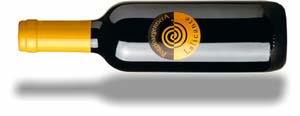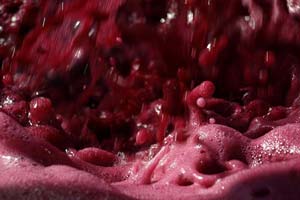Italian Dessert Wine
Sweet Italian Wine from Maremma
There is a wonderful array of Italian dessert wine produced in Maremma with an equally intriguing collection of names and label designs.
This page continues the Maremma wine list collection and is all about the Italian dessert wines from this undiscovered and breathtakingly beautiful part of Tuscany and Lazio and Italy's best kept secret.

It is a well known fact that a significant deciding factor for women in chosing wine is the design of the wine bottle label and it is true for me! And Maremma's sweet Italian wines have some of the most evocative and enticing labels!
The making of Italian Dessert Wine
There are over ten different varieties of Italian dessert wines made in Maremma, the two most well known being Passito - the modern Italian name for the ancient raisin Passum wine and now used generically for dessert wines - and Vin Santo.
Each winery has its own particular production "recipe", often following a centuries old tradition, but the essential components of production are the same:
- Mature grapes bunches are hand-picked and left to dry either on straw mats or wooden pallets outdoors in the late summer sun, undercover indoors, or hung on nets in well-ventilated rooms. Traditionally, the very best grape bunches in a vineyard are reserved for the production of Vin Santo.
- Many winemakers follow harvest folklore and hang or lay out the grapes to dry during a waning or hard moon on the belief that this will prevent the grapes from rotting.
- The grapes are left to dry for a minimum of three months, during which time they dessicate concentrating the sugars within them.
- Then, between December and late March, the grapes are slowly pressed to extract the very sweet grape juice.
- The initial fermentation of the wine - with or without the skins - is traditionally undertaken without the addition of yeast in wooden barrels (typically oak) of between 15 and 50 litres in size, from which a finished vintage has just been decanted importantly leaving behind the residue dregs called the "madre". The "madre" is believed to help initiate the fermentation of the new wine. More modern production methods involve the addition of yeasts suitable for high sugar concentrations
- The barrels are filled to a level of three-quarters full and are sealed. The empty qaurter is known as the "angels share" and is where oxidation of the wine takes place, producing the characteristic amber colour of the wines.
- The barrels are then stored in warm conditions, usually in the attic of the winery, where the higher summer and winter temperatutres are believed to help fermentation and development of the wines aroma.
- In the Maremma DOC regions of Montescudaio and Monteregio di Massa Marittima, the Vin Santo wines must be aged for a minimum of three years. Most Maremma dessert wines are, however, are aged for much longer: up to ten years to allow for a more complex bouquet and flavour.
- Sometimes, vintages created in different wooden barrels such as chestnut, juniper and cherry, are mixed to produce a blended sweet wine.
In Maremma, dessert wine is typically served with pastry flans - "torte" filled with chocolate Chantilly cream, or with small pastries filled with a selection of flavoured patisserie creams such as coffee, chocolate, hazlenut (nocciola) or vanilla, with handmade artisan chocolates, nougat, and dried fruits. But it can also be served with "picanti" cheeses containing flakes of dried chiilies, or blue cheeses such as gorgonzola dolce or gorgonzola piccante.
But the most common everyday Italian family table experience is a small glass of sweet wine served after the bowl of fruit that follows the "secondo piatto" (main course) and before or at the same time as the coffee, with mum's or grandmother's homemade "biscotti Cantuccini" - almond biscuits for dipping. They are so easy to make and delicious... almond biscotti recipe.
The Maremma Sweet Italian Wine List
In alphabetical order by location of each of Maremma's Italian vineyards and wineries. The links will take you to information about each of the wine estates.
Alberese

From the vineyards of Poggio Argentiera
- Lalicante Vino da Tavola Passito. Alicante 100%.
Gianpaolo and Justine describe their Italian dessert wine as: "Here, we have taken Alicante on its own and put it centre-stage, where it can show off notes of elderflower, sun-dried tomato, liquorice, chocolate and spices, finely woven tannins and a fascinating inky colour. Drink it with chocolate or strong cheese to discover its personality at its best. This is a very labour-intensive, hand-made wine and so very few bottles are made. This rare wine is only for those seeking something very special indeed."
Bolgheri
- Casa di Terra Virivè Passito
Caldana di Gavorrano
From the vineyards of the Azienda Agricola Montebelli.
- Fabula Passito IGT Maremma Toscana
Cinignano
From Campi Nuovi Azienda Agricola
- Campi Nuovi IGT Maremma Toscana Ansonica "Sorie" (Vendemmia Tardiva)
Grosseto
From Cantina I Vini di Maremma
- Vin Santo Macchiaiolo
Orbetello
From Azienda Agricola Santa Lucia
- Graticcio DOC Capalbio Vin Santo Trebbiano and Ansonica grape varieties
From Azienda Agricola Santa Lucia
- Parrina Vinsanto DOC 50% Trebbiano 20% Sauvignon 30% other white grape varieties
Piombino
From Azienda Agricola Sant'Agnese F.lli Gigli
- Paleatico 100% Aleatico
Pitigliano
From the vineyards of Cantina di Pitigliano:
- "Gregorio VII" Vino liquoroso di Sovana
Made from the Malvasia Toscana grapes with 15% alcohol. Ideal for desserts and dry fruit.
Riotorto
From Azienda Agricola Brancatelli
- Re della Valle 2007 Toscana IGT 100% Aleatico
Riparbella
From Caiarossa
- Oro di Caiarossa
From Podere La Regola
- Sondrete Bianco Dolce IGT Toscana Vino Passito Trebbiano, Malvasia and Colombana
Scansano
From the vineyards of Cantina Vignaioli Morellino di Scansano
- "La Rasola" Moscata Giallo Vino liquoroso. Made from 100% Moscato Giallo grapes.
Scarlino
From the vineyards of L'Azienda Vitivinicola Il Pupillo
- La Listrice Aleatico VDUS 100% Aleatico Nero. A raisin wine ideal with chocolate, "spuma di guanciale" (which literally mean pigs cheek mousse) or black chestnut bread.
- Vin Santo DOC 80% Trebbiano Toscano 20% Malvasia Boanca Toscana. Perfect with Tuscan almond biscotti.
Seggiano
From Azienda Agricola Piandibugnano
- Nanerone Aleatico di Toscana IGT 100% Aleatico. 15% alcohol. With a garnet red colour and intense bouquet, this smooth and sweet dessert wine is perfect with chocolate puddings or just on its own!
Suvereto
From Petra
- Petra Angelo di San Lorenzo Trebbiano, Vermentino, Malvasia and Clarette
Explore Maremma's Italian wine lists some more...
- Try also Italian Grappa from Maremma: usually drunk as a "digestivo after a meal, but is also perfect for serving with some desserts.
- Or the Italian rose wine
- And sparkling Italian wine
- Italian red wines
- White Italian wine
- Find out what Maremma's wine producers consider to be the best Italian wines
- Find a great Italian wine guide

















